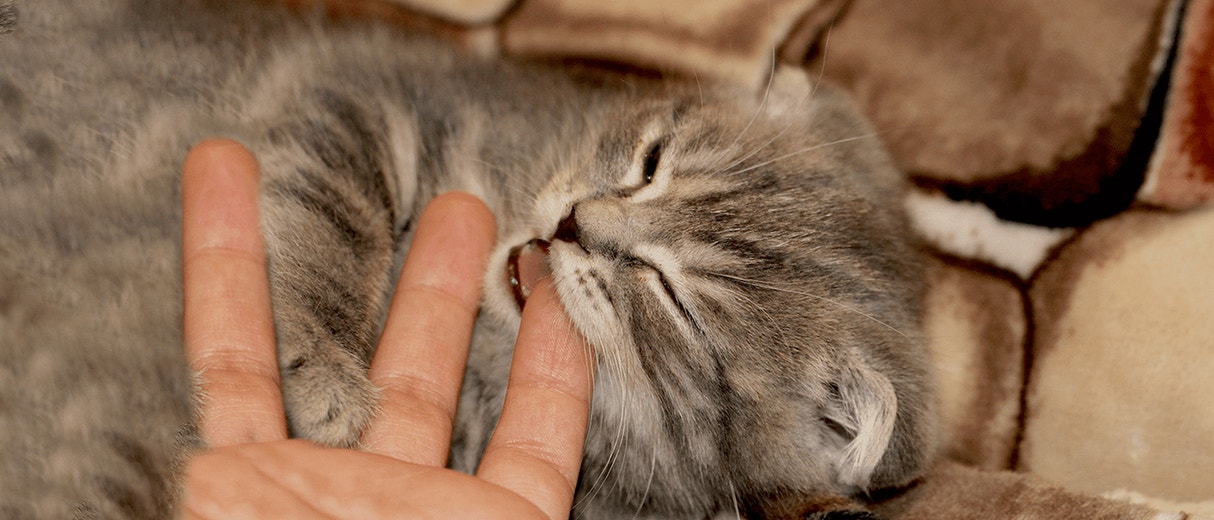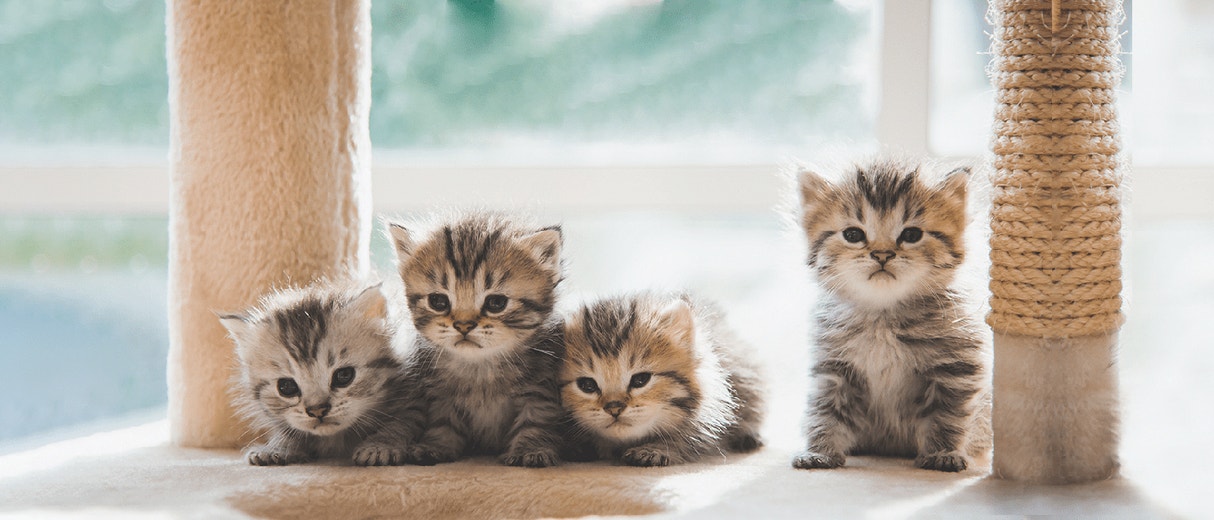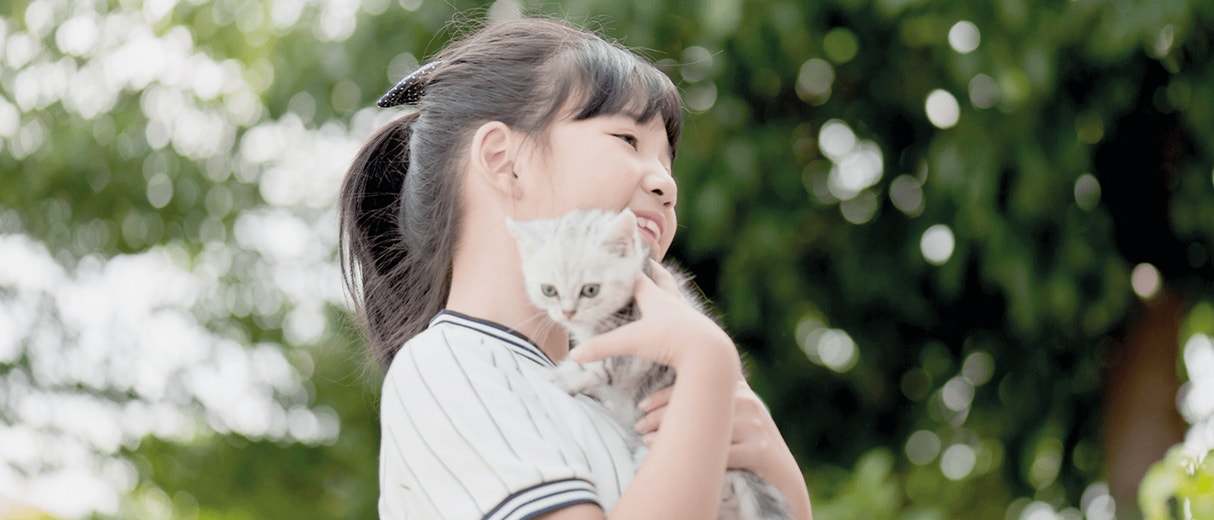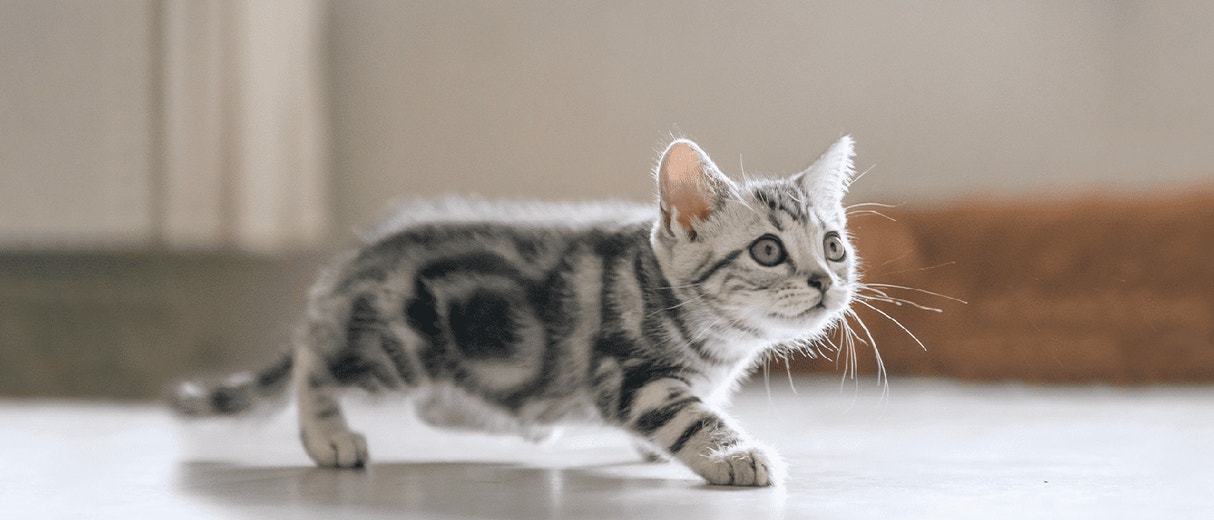
Cat Kneading: Why do Cats Knead
There’s nothing sweeter than when your cute little kitten rests on your lap and kneads your legs with her paws. It’s the equivalent of a kitten massage! Through this display of affection and contentment, your kitten is displaying a natural behaviour that goes all the way back to the day she was born.
Why do Cats Knead
You might have come across your little furball ‘kneading’ and wondered why they make this gesture of pushing their paws rhythmically against something soft or on your lap. Well, kneading (or making biscuit as it is fondly called because of how it is similar to kneading dough) is an adorable habit of cats that signifies content, happiness, and sheer bliss.
Not all furries knead, but it is quite a common behaviour among kitties of all age. The cat kneading technique differs from one fur baby to another. Some cats use only their front paws while some use all four. Similarly, some may purr loudly when kneading and some might do it quietly. Whichever way they make biscuits, you will mostly find your little munchkin kneading on soft objects like blankets or their favourite place - your lap.
So, why do cats knead? There are many theories regarding cat kneading but the most widely accepted ones are:
Blankets & other soft objects -
Kittens knead their mothers when nursing to stimulate milk production. While kneading blankets or other soft objects will not produce milk, but cats continue doing it because they associate the gesture with the contentment of snuggling against their mother.
Owners -
your fur kid kneads while purring and sitting on your lap, consider yourself fortunate since your fur baby is essentially telling you how much they love you. How adorable is that!
Other common reasons why cats knead and pad at you?
Being territorial -
One possible explanation to the cat kneading behaviours of feline is that their paws have scent glands that secrete pheromones, which they rub to stimulate and mark territories. So, when they are pawing your lap, your little fur kiddo is probably signalling other cats to stay away from you. Cute!
Creating a nest -
Cats knead and pad on you or other soft objects for nesting too - a behaviour passed down by the wild ancestors of now domesticated cats. Wild cats knead and pad down fallen leaves to create a cushiony nest for themselves and their young ones to sleep in. It is something like we do to fluff up our pillows. They also paw the foliage to ensure there aren’t any predators or threats lurking underneath. So, why cats knead when they are no longer in the wild? Indeed, although domestic cats don’t really need to ‘nest’ or look for dangers, they might do it as a habit.
They are on heat -
One of the most common reasons why cats knead is when the females are on heat. Also known as oestrus, this behaviour is directed towards male cats to show they are ready to mate. However, if your female fur baby is neutered, their cat kneading behaviour is probably because of other reasons.
What to do if your cat's kneading hurts and you want to stop it?
If you are worried as to “why is my cat kneading me?”, know that the behaviour mainly roots from love and affection. Now that you understand why do cats knead, please don’t punish them if their kneading hurts you, since, after all, they are only reciprocating your love and affection in the way they know! Instead, try the following tips to save yourself from feeling like a pin cushion:
- Keep your feline baby’s nails trimmed at all times.
- Place a soft thick blanket between your furry kid’s paws and your lap.
- Gently push them to lie down and give them tender loving care by stroking and caressing them.
- Divert their attention with a yummy treat or a fun toy.
FAQ for Cat Kneading Behaviour
-
Why does my cat knead blankets?
Wondering why do cats knead blankets? They knead blanket as a habit from their kittenhood when they kneaded their mother’s belly while nursing. It is a sign of contentment and relaxation. They also do it for nesting, i.e., preparing a place to sleep in just like humans fluff up their pillows.
What is Cat making biscuits?
Cat making biscuits is when cats ‘knead’ on soft objects like a blanket or on their human’s lap to show contentment, love and affection. They push one paw after another rhythmically, which resembles kneading dough and hence the behaviour is known as cat making biscuits.
Is cat kneading a sign of affection?
While it might not be the most comfortable way for you but your cat is showing you love and affection by kneading on you. Also known as cat making biscuits since they way it resembles kneading dough, cats knead only when they are content and relaxed.
What do cat tail flicks mean?
To know the language of the cat from the tail, observe the frequency of the flick or the cat tail positions. A rigid back and forth means the cat is focusing on something, most likely on prey. Flicking and thumping the tail indicates a high level of stress and agitation. An upright tail means your fur baby is asking for some love.
Why does my cat hit me with her tail?
Sometimes it is difficult to know the language of the tailed cat. It can be a gesture of fondness, or excitement. It can also mean slight frustration. But mostly it is a positive sign.
Why does my cat's tail move when I pet her?
If you are petting your cat, and in return, they move their tail slightly, it means they are feeling secure. Your cat feels safe in your presence, and if you wish, you may continue with your petting. In this way, you will know the cat language through the tail.
Do cats wag their tails like dogs when they are happy?
Dogs generally wag their tails when they are happy, satisfied, or excited. However, for cats, the same does not apply. The trick to knowing is a thorough observation of its movement. The cat can thump its tail, swish it, etc., and each has a different message.
What stresses out a cat?
Some of the most common causes of stress in cats are:
Change in routines
Home relocation
New member in the family
Loud noises
Vet visits
Getting bullied by other animalsDo cats purr when they are stressed?
Indeed, they do, since purring is not just a way of communicating contentment, affection, and happiness, but it is also a self-soothing technique. So yes, a stressed kitten might also purr.
Does petting a cat relieve stress?
While petting a cat will relieve your stress, the same cannot be said for your furry baby. Of course, if your fur kid wants to curl up to you when stressed, give her all the cuddles, but usually, a stressed cat would like to be left alone and hide in a safe place when stressed.
What can I give my cat to reduce stress?
You can use stress relief products such as calming collars, pheromone diffusers, and thundershirts to calm your fur baby. Or you can also offer calming cat food and treats and use play as a distraction. If nothing works and the signs of stress in cats continues for long, take your furry to see a vet.
Why does my cat rub against my legs when I walk?
If you are wondering why do cats rub against your legs, this article aims at explaining this behaviour. It is common for cats to rub against the legs of loved ones. Though it mostly signifies love and affection, it is a complex social interaction for cats. By rubbing against the legs of their favourite humans, cats leave scent signals to claim possession and belongingness, as well as for greetings and identification. Therefore, the next time you wonder why the cat rubbing head on me, remember to shower it with all the love and affection.
Can cats be trained not to scratch furniture?
Cat clawing is one of the natural urges in cats, which not just helps in marking territory or sharpening claws, but for relieves stress and feeling good. If trained from a young age, cats can get accustomed to not scratching furniture.
Why is my cat scratching the furniture?
One of the primary reasons behind a cat scratching the furniture is to maintain and sharpen their claws. However, in addition, cats scratch furniture to condition paw muscles, relieve stress, stretch, as well as to mark territories and leave scent signals. Scent signals, combined with claw husks and scratches are strong visual cues for other cats.
How can I get my cat to stop scratching the couch?
If you want to avoid your cat clawing the couch, you can purchase a scratching post for them to use instead. Using a citrus spray is also effective as a cat repellent to keep them off furniture. In addition, you can also trim their claws to make sure they stop scratching couches. However, if your cat ventures outdoors, it is better to use homemade cat repellent sprays than to have them declawed.
Why is my kitten meowing at night?
Most cats are nocturnal in nature, meaning they are more active at night. Though most domestic cats grow acquainted with the timing followed by their owners, some cats show natural tendencies of being more active during the night. Kitten meowing is a common practice for cats of all ages. However, if your kitten meowing is particularly at night, it might mean your little furball is feeling bored, and wants to go out. Similarly, if your kitten keeps meowing at night, it might be distressed for some reason.
Why do kittens chirrup?
Chirrups, or chirping sounds are commonly made by cats and kittens alike. Mother cats often use chirping sounds or trills to gesture their kittens to follow her. By imitating the chirping kitten sound, your kitten might want you to accompany or follow it.
Why is my kitten making weird noises?
If your kitten keeps meowing or making weird kitten sounds like yowls for longer periods of time, it is usually indicative that your kitten is upset with something, or is experiencing distress and anxiety. You can help your kitten to calm down by gently holding it, stroking its head and under the chin, as well as by providing it with its favourite treats and toys.
What do different kitten noises mean?
Kittens are social creatures which often use kitten sounds to interact with other cats, as well as their owners. Depending on the type of sound produced, its vocalization and tone, kittens can mean several things. Paying close attention to these noises can help you understand your kitten better and interpret what it is trying to communicate.
See More Articles Like This




